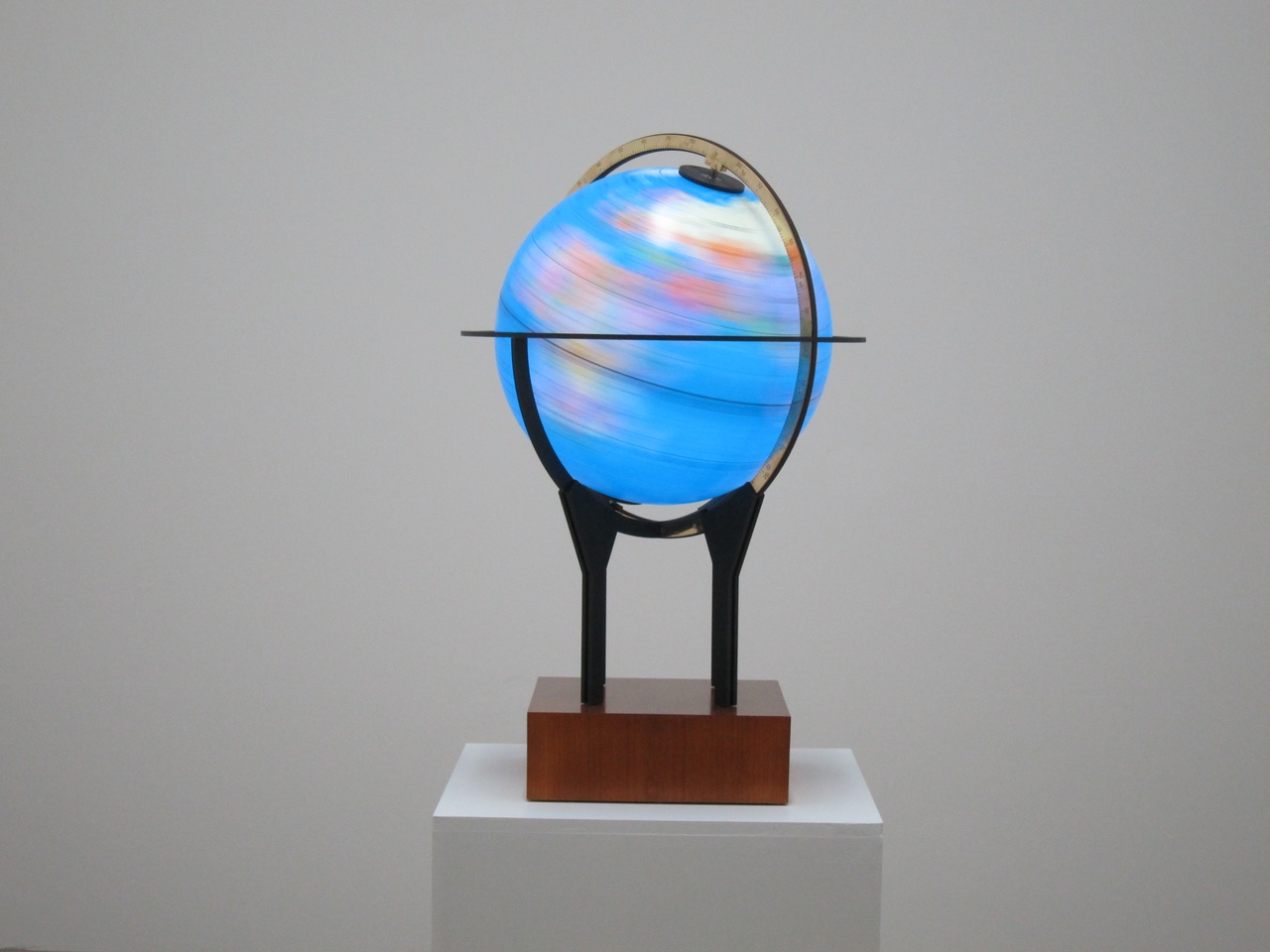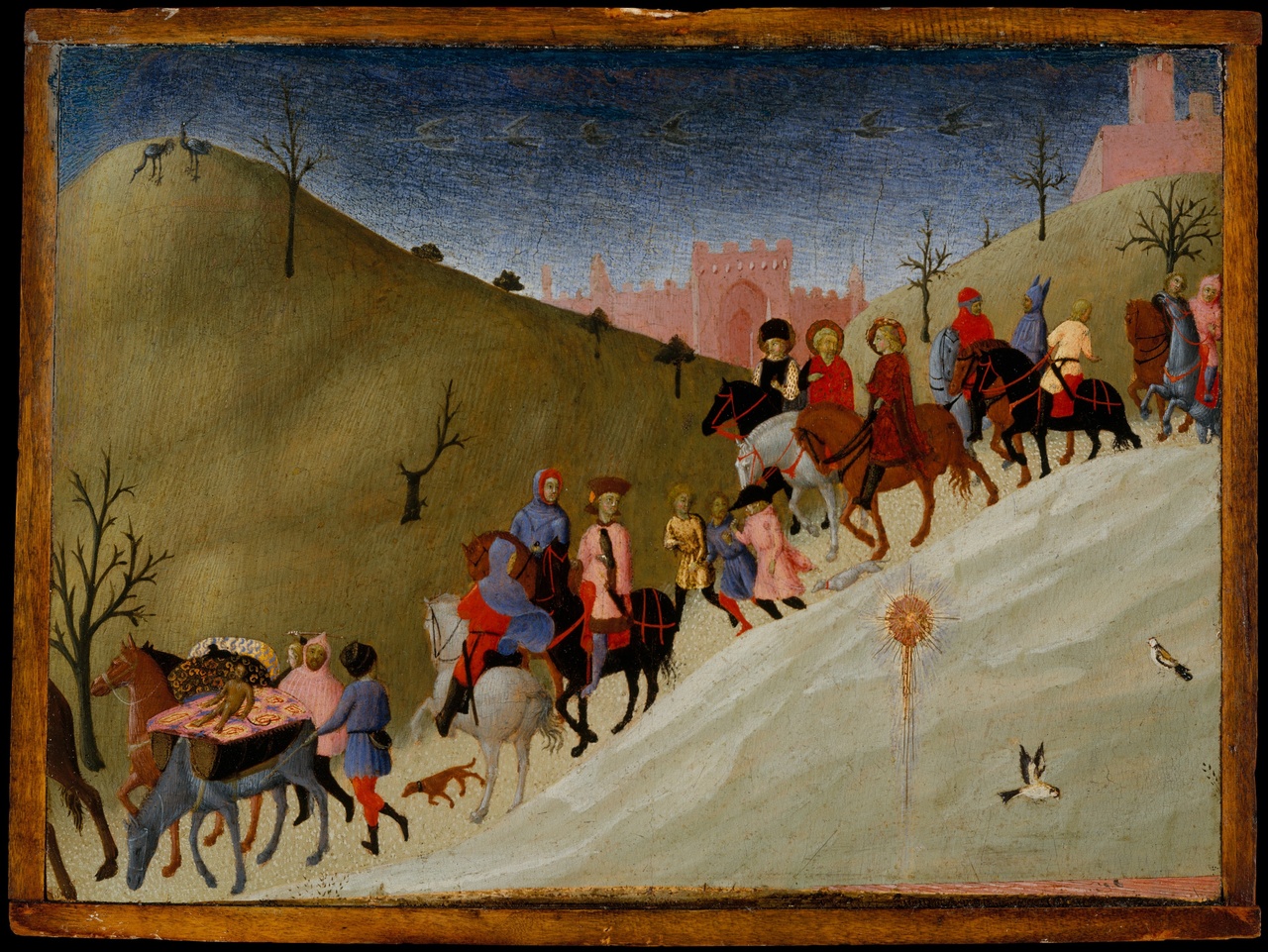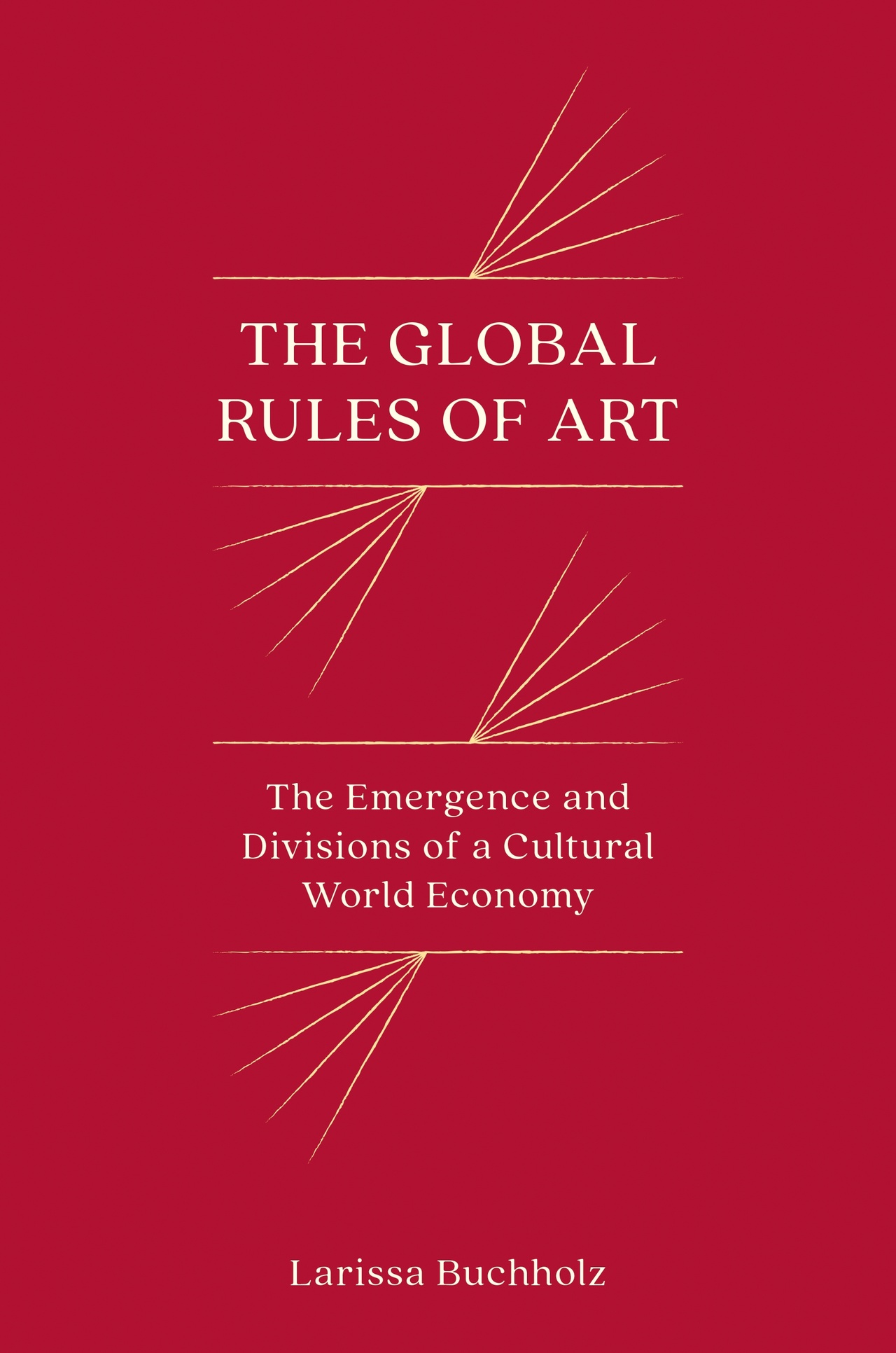HOW IS A GLOBAL ART WORLD POSSIBLE? Paul Buckermann on “The Global Rules of Art” by Larissa Buchholz

Fayçal Baghriche, “Souvenir,” 2012
While another world may still be possible, the discourse on globalization has shifted from speculation to acceptance. After sprawling debates in the late 20th century about the potential of planet-spanning exchange, the circulation of ideas, persons, and artefacts has become undeniably global today. For art and culture, the cross-cultural transfer of ideas, materials, and aesthetic forms has been a reality since early human migration. Such dis embedding- and reembedding became cross-continental with maritime transport, imperial trade routes and, later, colonial expansionism in the early modern period, only to accelerate into planet-spanning networks fostered by 20th-century communication technology and institutional integration into a postcolonial “international community.”
Artistic and critical discourse has settled on few solid understandings on “the” global art world. One major worldview gravitates toward paradigms of transcultural cooperation, free-flowing streams, and democratic exchange, all of which increasing equality, diversity, and progress. The opposite worldview centers on assumptions of ever-growing dominance of imperialist centers, persistent structural oppression, dull aesthetic homogenization, dressed-up exploitation, environmental ravages by art-world jet sets, and blunt discrimination of peripheries. But what if globalization has fostered both neo-imperial exclusion of peripheral regions and increasing diversity at the same time?
Larissa Buchholz’s The Global Rules of Art (2022, Princeton University Press) follows such ambivalent dynamics and sketches a global art field that “avoids the dichotomies” of “increased diversity or a calcifying homogeneity” (p. 262). On a theoretical level, the study claims to advance Pierre Bourdieu’s field approach from a national to a global scale in order to understand how a global field has emerged, which is to be conceived as “more than just the sum of various national arenas” (p. 15). Empirically, Buchholz’s ambitious data analysis leads to a complex narrative of globalized art, shedding light on patterns of resource distribution, individual artistic career trajectories, and the rise of institutions to global power. The book’s main findings show how a global art field has emerged from “multiple global transformations” (p. 7) into an expert-driven, autonomous pole “oriented around field-specific artistic or intellectual values” (p. 18) on the one side and a market-oriented, heteronomous pole “chasing material profits” (p. 19) on the other. These interrelated subfields have not only globalized slightly asynchronously since the 1980s but also established an increasingly radical “decoupling” (p. 6) from each other. The consequence is a “dual cultural world economy” (p. 263) of a global art field “structured around a fundamental divide between art and money” (p. 263).
Regarding paradigms of brutal hegemony or fruitful cooperation, Buchholz offers an empirical insight that, despite any contradictions, contains both trajectories. This picture of a global art field is based on historical research on the institutional development of biennials, auction houses, art dealers, fairs, and exhibition venues; content analysis of hegemonic critical discourse; and statistical analysis of artists’ market performance and institutional recognition. All conclusions need to be handled with some care, as the data used is sometimes highly selective and the search for ideal types dominates the argumentation. For example, while research on more than 200 biennials and over 35,000 exhibiting institutions aims at completeness, the statistical analysis of artists’ market performance and institutional recognition is based on only the top 100 lists generated by commercial databanks between 1997 and 2017. To find clusters in relations of artists’ economic and symbolic capital patterns, 179 ultra top-tier artists, ergo much less than 1% of the world’s artists as a stand-in for what Buchholz calls “global canons”, are analyzed. As another example of limited analysis, to identify possible changing semantics in the field, Artforum International’s increasing use of the terms “global” and “globalization” between 1987 and -2017 is analyzed quantitatively and qualitatively as an example of hegemonic discourse.

Sassetta (baptized name Stefano di Giovanni), “The Journey of the Magi,” ca. 1433–35
In the book’s first part, Buchholz approach is in line with a paradigmatic, seemingly simple but essentially monstrous, question in sociology: How is a global art sphere possible? This kind of question, an essential part of every social scientist’s style of thinking, does not aim at making dreams come true or improve current affairs for the better; instead, it disrupts the quasi-natural world by understanding it as highly improbable. How has a complex global art field emerged, even when it cannot be explained by god’s will, natural laws, or an elite conspiracy?
Most will have heard of biennalization, global vocabulary in critical discourse, or the rise of a few alphaauction houses. Taking these together, however, Buchholz reconstructs a panorama, in which the current state of global art has become possible in just a few decades. First, biennales, critical reflections on global art, and relative diversification of exhibited artists have successively shifted attention and prestige to a broader spectrum of producers, mediators, and audiences. Second, selected art fairs, artist rankings, and auction houses have managed to position themselves as central trademarked platforms for a global market. While expert-driven institutions started to establish a more transcultural structure and perspective in the 1980s, the market followed roughly a decade later. Experts favored installations, performances, and video art, but auction houses and strictly commercial galleries stuck with commodifiable objects like paintings and sculptures. While avant-garde galleries and non-profit exhibition venues presented more and more artists from a variety of peripheral regions, the market tended to concentrate on the West and a highly selective rest, composed of emerging economies like China. Although biennials extended the geographic dimensions of the art field to Cuba, Brazil, or South Africa, auction houses and global galleries kept gatherings in New York and London, adding only a few “peripheral” market hubs, such as Hong Kong.
All these stories may have turned into folklore around the art world’s bonfires, but Buchholz shows how such an improbable global sphere was only possible through the uncoordinated interplay of various independent shifts in institutional networks, semantics, and resource allocations. Both poles of the cultural field have reached a level of globalization that not only materially spans the whole planet but also establishes new global modes of “classifying and evaluating” (p. 62). Buchholz states that these consecrational practices are not exclusively a hegemonic expansion of certain regional traditions but take shape in a distinctively global way in the new dual-cultural world economy.
In the second part of The Global Rules of Art, Buchholz presents the empirical state of top-tier global artists between 1997 and 2017. Here, Buchholz ventures from Bourdieu’s theory of different forms of capital to research the relations between economic performance and field-specific recognition. Based on ArtFacts.Net top-100 lists of artists’ exhibitions and Artprice.com sales statistics, different types of artistic careers are deduced from a sample of 179 artists who appeared in both top tiers in 2017. While one profile – the “Winner-Take-All” – was able to gather top institutional recognition and the highest market prices, most artists in the sample belong to other types of relations between low/high symbolic capital and low/high economic capital. Buchholz shows that these profiles favor not only different regional backgrounds, gender classifications, and age structures but also different media and exhibition formats, which shows how inequalities are disrupted and re-stabilized simultaneously.
In a third part, the study proactively counters lingering deterministic thinking in such macro-narratives. Buchholz offers detailed accounts of two artists’ careers from periphery to global recognition (Gabriel Orozco) and market success (Yue Minjun), which both fit smoothly into the assumed money/art divide.

Although Buchholz’s study is limited by its focus on the top elite of the global art market and exhibition circuit and its search for ideal types within this group, the field-theoretical approach proves suitable for recognizing larger structural patterns of a contradictory global art field between expert reputation and money. However, this study should be further discussed on multiple levels. First, Buchholz’s focus hardly captures cases that do not meet extreme types of top-tier artistic careers or institutions so neatly. Critically approaching Buchholz arguments for highest success, it will be interesting to conceptualize such cases because they can have an immense influence on global discourse and institutional agendas. Which theorization fits, for example, ruangrupa’s documenta fifteen, with its more than 1,500 participants? Although ruangrupa had neither market success nor extraordinary institutional recognition before their call to Kassel, they had a remarkable impact on debates about authorship, institutional responsibility, and situated knowledge on a global level. Such developments need not be statistical “black swan” phenomena but may actually reflect the field’s constant need for novelty in a particularly global way aside the art field superstars.
Second, Buchholz’s claim for advancing field theory to a global level remains rather confined in this book. [1] Whereas Bourdieu’s The Rules of Art focused on symbolic revolutions in 19th-century France with impressively general theoretical tools that have proven flexible in a variety of studies, Buchholz’s The Global Rules of Art does not sufficiently exemplify theoretical challenges and adaptations for understanding the particularities a global art field. Buchholz discusses Bourdieu’s “reversed economies” of artistic recognition and market success to empirically demonstrate that globalization has shifted this relation. [2] However, these empirical snapshots do not touch on some of the most intriguing challenges of a sociology of the arts in a global realm. For example, how are “realms of cultural production as relatively self-contained universes” (p. 11) still possible even if they are situated in an increasingly differentiated and entangled world of multiple modernities and countless rationales, all aiming at colonizing other social spheres epistemologically or by military force? In this sense, Buchholz follows a rather strict perspective on autonomy as expert discourse and institutional recognition. Some post-Bourdieusian theorists have increasingly questioned more structuralist interpretations of Bourdieu’s writings in order to counter analytical determinism between structure and action. Michèle Lamont’s, Luc Boltanski’s and others’ inquiries into the critical capabilities of “normal” people have shown how complex ecologies of ever-shifting worlds are navigated quite pragmatically all the time. Such critical capabilities can be seen in current protests fueled by de- and post-colonial critiques or calls for institutions to take corporate socio-ecological responsibility. Numerous networks of activists, politicians, journalists, scientists, museum workers, and artists strategically use the symbolic power of art for field-external issues and vice versa. Actions such as the demonstrations against Warren Kanders at the 2019 Whitney Biennial, Nan Goldin’s cross-continental campaign against the Sacklers, #MeToo, and initiatives for decolonizing educational canons have not only had an impact beyond “autonomous art” on a global level. They have even celebrated symbolic victories within the art field that did not have to be paid-off by ignorance among respected institutions but sometimes rather the opposite.
A flexible general theory of art in a global society should be able to approach such cross-cultural and multi-level phenomena. An updated field theory must not neglect autonomous logics but rather consider phenomena that transgress boundaries of artistic, scientific, political, legal, and economic fields as well as different levels from “the” local to “the” global. Although Bourdieu described sociology and art as strange “bedfellows” (“ne font pas bon ménage”), Buchholz’s questioning of all too one-sided conceptions of “the” global art field and her empirical insights will be a friend with benefits when it comes to advancing these endeavors.
Larissa Buchholz, The Global Rules of Art: The Emergence and Divisions of a Cultural World Economy, Princeton, NJ: Princeton University Press, 2022. 416 Pages.
Editor’s note: An earlier version of this review has been posted online on June 30, 2023. A response to the original version by Larissa Buchholz can be found here.
Paul Buckermann is a postdoctoral researcher at the Research Network “Validity of Knowledge” at Heidelberg University. His sociological work focuses on art, knowledge, technology, and science. Selected publications include “Ranking Art: Paradigmatic Worldviews in the Quantification and Evaluation of Contemporary Art” (2021), “The ArtReview’s Power 100. On the Concept and the Constitution of Power in Contemporary Art” (2022) and, as an editor, Die Welten der documenta. Wissen und Geltung eines Großereignisses in der Kunst.
Image credit: 1. © Fayçal Baghriche; 2. © The Met Fifth Avenue, public domain
Notes
| [1] | In other publications, Buchholz has elaborated more on, for instance, a “vertical autonomy” of a global field in relation to regional fields. See Larissa Buchholz, “What Is a Global Field? Theorizing Fields beyond the Nation-State, “Fielding Transnationalism,” special issue, Sociological Review Monograph Series 64, no. 2 (March 2016): 31–60. |
| [2] | See already Nina Tessa Zahner, “Die neuen Regeln der Kunst. Andy Warhol und der Umbau des Kunstbetriebs im 20. Jahrhundert” (Frankfurt: Campus, 2006); Isabelle Graw, High Price: Art between the Market and Celebrity Culture (Berlin: Sternberg Press, 2010). |
